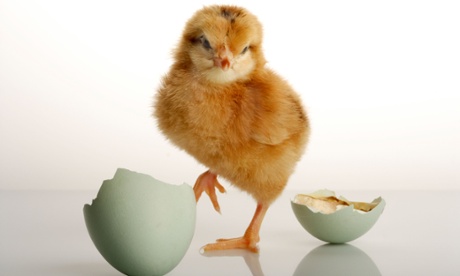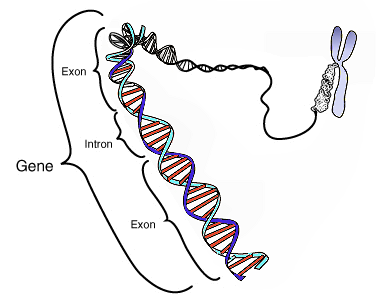
A part of my brain screamed 'ah, so cute!' and then the damning title: Would you prefer to eat genetically modified eggs, or see day-old chicks destroyed? I gasped, thought 'no! No! So sad!' and looked down at my plate of chicken wings...and carried on eating...I kid, of course. I love chicken, I never get sad about their deaths.
But moving on from my jokes before they get a little too dark, I figured GM foods is a good topic to set out to research. It's been discussed, it's been argued and it makes a great post with the possibility of a straight-forward pro and cons list. Onwards to the knowledge of GM foods!
What is it?
How does it work?
- Before going into this, we need to understand the basics of what a gene is and its relation to DNA. A gene is the basic physical and functional unit of heredity. It is what makes up DNA.
- Therefore DNA (deoxyribonucleic acid), the hereditary material in humans and almost all other organisms, is made up of all these genes. The information in DNA is stored as a code made up of four chemical bases: adenine (A), guanine (G), cytosine (C), and thymine (T). Human DNA consists of about 3 billion bases, and more than 99 percent of those bases are the same in all people. The order, or sequence, of these bases determines the information available for building and maintaining an organism. DNA bases pair up with each other, A with T and C with G, to form units called base pairs. Each base is also attached to a sugar molecule and a phosphate molecule. Together, a base, sugar, and phosphate are called a nucleotide. Nucleotides are arranged in two long strands that form a spiral called a double helix. The structure of the double helix is somewhat like a ladder, with the base pairs forming the ladder’s rungs and the sugar and phosphate molecules forming the vertical sides of the ladder.
- An important property of DNA is that it can replicate, or make copies of itself. Each strand of DNA in the double helix can serve as a pattern for duplicating the sequence of bases. This is critical when cells divide because each new cell needs to have an exact copy of the DNA present in the old cell.

- Moving back to GM foods, this works by modifying genetic material in organisms.Genes use chemical messages to instruct the cell to perform its functions by making proteins or enzymes. Traditional methods of genetic methods is a process that involve mixing genes so that a specific gene with a desirable trait is inserted into a new plant or animal.
- By introducing a foreign gene, scientists prompt the altered cell to make new proteins or enzymes so that the cell performs new functions. For example, the gene that helps a cold-water fish survive low temperatures can be inserted into a strawberry to make it frost-resistant.
- Current GM techniques used to transfer foreign cells into animals and plants include: bacterial carriers, biolistics, electroporation, gene silencing, gene splicing, microinjection and viral carriers
- Gene splicing: cutting a gene from one organism and inserting it into the DNA of another organism so the desired characteristic can be transferred from one organism to another. Bacteria contain restriction enzymes that form part of their defence against invasion by another organism or bacteriophage (a bacterial virus). The restriction enzymes attack the foreign DNA by cutting it into precise sections and preventing it from being inserted into the bacterium’s chromosome.
Different bacteria produce different restriction enzymes that cut any DNA at different places, making the DNA ‘sticky’ in some cases, which means they can be ‘pasted’ directly onto the target organism’s prepared DNA.
Using these restriction enzymes from bacteria, molecular biologists can genetically engineer the DNA for insertion into target (host) cells to modify gene traits. The molecular biologist then uses another enzyme (DNA ligase) to fuse the new gene sequences into the chromosome.
Alternatively, instead of pasting, the new gene may be inserted into a plasmid that invades the target cell and delivers the gene. An example of this is the invasion of plant cells by Agrobacterium tumefaciens.

Pros:
- able to create plants that have better resistance to weeds, pest, diseases
- able to create bigger yields therefore more efficient use of land, less use of herbicides and other pesticides
- able to create foods with better texture, flavour and nutritional value
- able to create foods with longer shelf life
- it can create an essential sustainable way to feed the world
- farmers can spend less money producing more food, and do less tilling to remove weeds, protecting soil
Cons:
- the creation of superweeds that become more resistant to herbicides
- plants that produce their own insecticide leads to bugs being resistant to it
- the human population consume these insecticides, e.g. Bacillus thuringiensis
- adverse change of nutritional value of the crop
- possibility of introducing allergens and toxins in food
Thanks for reading!
No comments:
Post a Comment